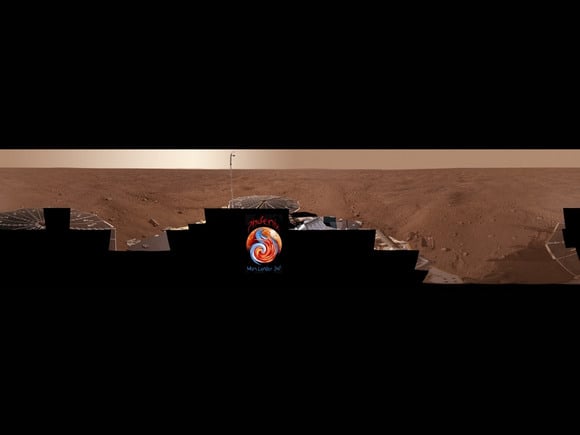[/caption] The Phoenix Mars lander finally was successful in delivering a fairly fresh sample of Martian soil to the Thermal and Evolved Gas Analyzer (TEGA) oven on Wednesday and a "bake and sniff" test identified water in the soil sample. "We have water," said William Boynton of the University of Arizona, lead scientist for TEGA. "We've seen evidence for this water ice before in observations by the Mars Odyssey orbiter and in disappearing chunks observed by Phoenix last month, but this is the first time Martian water has been touched and tasted."
The soil sample came from a trench approximately 2 inches deep. When the robotic arm first reached that depth, it hit a hard layer of frozen soil. Two attempts to deliver samples of icy soil on days when fresh material was exposed were foiled when the samples became stuck inside the scoop. Most of the material in Wednesday's sample had been exposed to the air for two days, letting some of the water in the sample vaporize away and making the soil easier to handle.
"Mars is giving us some surprises," said Phoenix principal investigator Peter Smith of the University of Arizona. "We're excited because surprises are where discoveries come from. One surprise is how the soil is behaving. The ice-rich layers stick to the scoop when poised in the sun above the deck, different from what we expected from all the Mars simulation testing we've done. That has presented challenges for delivering samples, but we're finding ways to work with it and we're gathering lots of information to help us understand this soil." [caption id="attachment_16301" align="alignnone" width="516" caption="Phoenix's Workspace on Mars. Credit: NASA/JPL/Caltech/U of Arizona"]
[/caption]
Also at the press conference announcing the results, NASA also announced a mission extension for Phoenix, through Sept. 30. The original prime mission of three months ends in late August. The mission extension adds five weeks to the 90 days of the prime mission.
"Phoenix is healthy and the projections for solar power look good, so we want to take full advantage of having this resource in one of the most interesting locations on Mars," said Michael Meyer, chief scientist for the Mars Exploration Program at NASA Headquarters in Washington.
During the mission extension, the science team will attempt to determine whether the water ice ever thaws enough to be available for biology and if carbon-containing chemicals and other raw materials for life are present.
A full-circle, color panorama of Phoenix's surroundings was recenlty completed by the spacecraft.
"The details and patterns we see in the ground show an ice-dominated terrain as far as the eye can see," said Mark Lemmon of Texas A&M University, lead scientist for Phoenix's Surface Stereo Imager camera. "They help us plan measurements we're making within reach of the robotic arm and interpret those measurements on a wider scale."
Original News source:
Phoenix News site
 Universe Today
Universe Today
